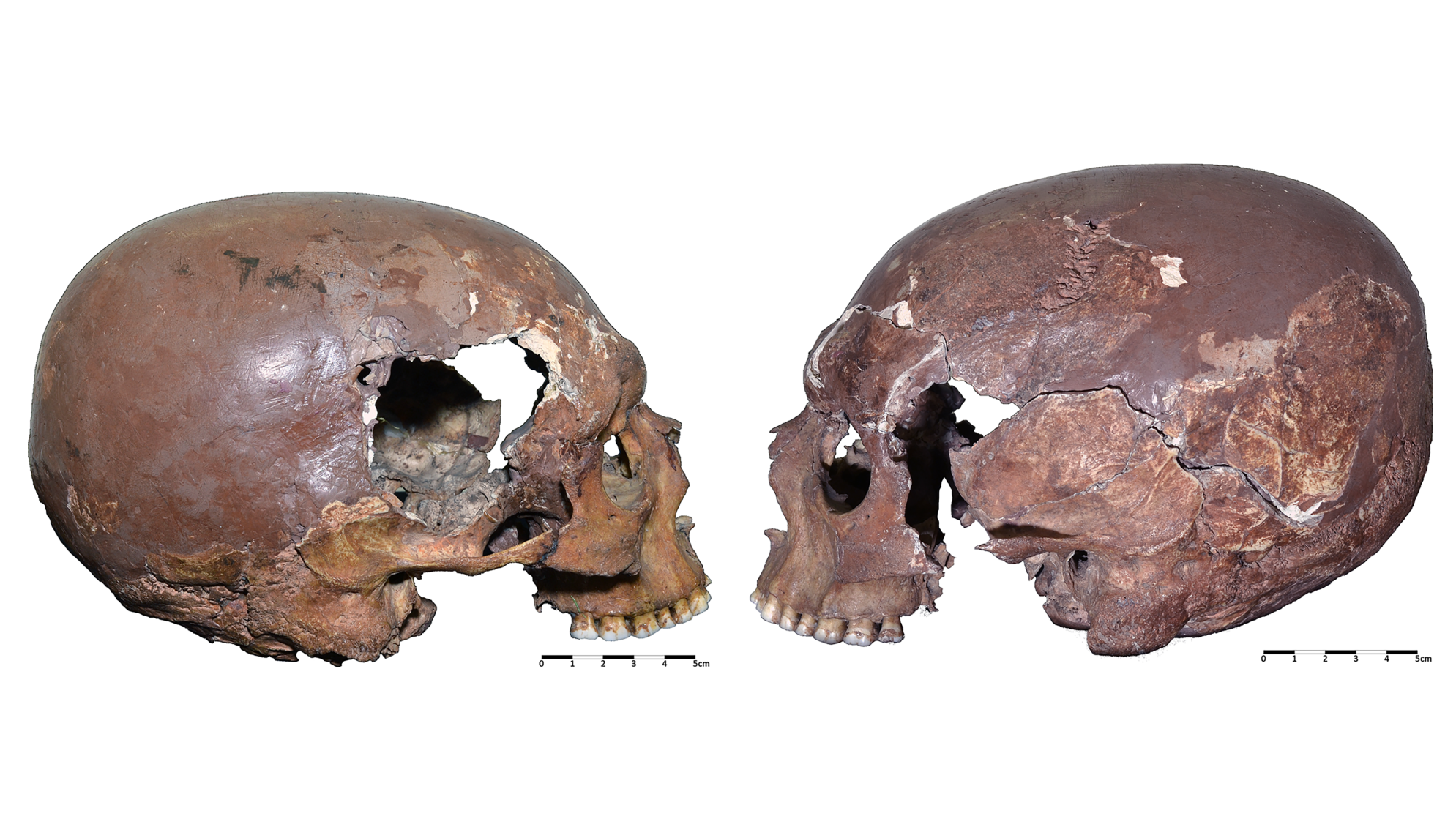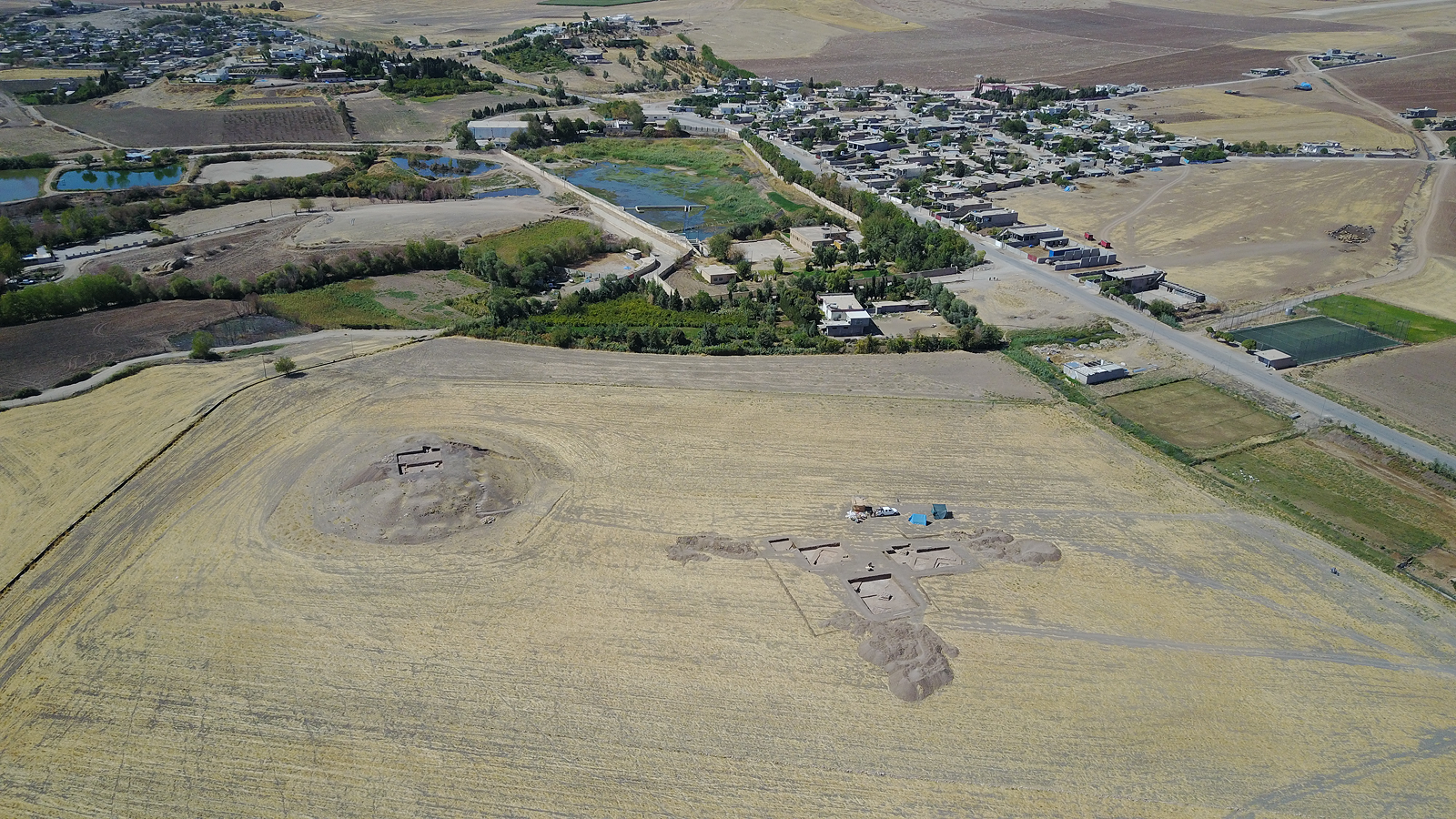'Oddly shaped head' left in Italian cave 12,500 years ago is Europe's oldest known case of cranial modification, study finds
A Stone Age skull discovered in a cave in Italy is the oldest evidence of artificial cranial modification ever found in Europe.

A prehistoric skull discovered half a century ago in an Italian cave is the oldest example of artificial cranial modification ever discovered in Europe, new research reveals. The unusually long skull, which is about 12,500 years old, confirms that this practice dates back to at least the Stone Age.
"Body modification — including cranial shaping — was one of many strategies used by past societies to construct and communicate identity, status, and belonging," study co-author Irene Dori, a bioarchaeologist at the University of Florence, told Live Science in an email.
In the new study, published July 30 in the journal Scientific Reports, researchers analyzed a skull from Arene Candide Cave, a Late Upper Paleolithic site on the northwestern coast of Italy. Between about 12,900 and 11,600 years ago, generations of hunter-gatherers used the cave to bury their dead. In the 1940s, archaeologists found dozens of human skeletons at the site, and most had been rearranged after death in an ancient ritual. One particular skull of an adult male, called AC12, was discovered in a niche on top of another burial.
In the 1980s, researchers suggested that the long, narrow skull of AC12 may have been the result of a disease or accident that altered the growth of the skull when the man was a child.
But Dori and colleagues were intrigued by another potential explanation: artificial cranial modification. For the new research, they virtually reconstructed the skull and statistically demonstrated that the best explanation for the "oddly shaped head" of AC12 was childhood body modification, they wrote in the study.
The practice of artificial cranial modification involves applying pressure to an infant's head during growth and development. When done consistently for months or years, this results in a permanent reshaping of the person's skull. It is unclear whether the practice would have affected the person's brain function.
The AC12 skull had been reconstructed and glued together in the 1970s, so the researchers had to take it apart to properly measure the skull fragments. They opted to do this nondestructively by performing CT scans of the skull and virtually separating the bones. Then, the researchers digitally reconstructed AC12 in four ways and used a technique called geometric morphometrics, which quantifies the biological shape of a bone, to compare the virtual reconstructions to skulls from around the world.
Get the world’s most fascinating discoveries delivered straight to your inbox.
Related: 'Cone-headed' skull from Iran was bashed in 6,200 years ago, but no one knows why

All of the results of this analysis revealed that AC12 was similar to other artificially modified skulls rather than to normal skulls or those affected by disease or trauma. Specifically, the shape of the AC12 skull was probably made by wrapping strips of fabric tightly around the circumference of his head, the study authors said.
"This would be the earliest known case of artificial cranial modification in Europe," the researchers wrote in the study, as the bones have been dated to between 12,190 and 12,620 years ago.
The reasoning behind the practice of artificial cranial modification is still unknown, and its meaning probably varied among the cultures that performed it.
"Cultural body modification was likely an ancient and widespread practice," Dori said, and "it may have been one of the several practices used to express identity and transmit social norms." At Arene Candide, there is also evidence from people's teeth that they decorated their faces with cheek plugs. But because the skeletons are very fragmentary, Dori said, it is unclear how common artificial cranial modification was.
One idea the researchers are investigating is whether AC12 was somehow different from others buried in the Stone Age cemetery. Analysis of the Arene Candide skeletons' DNA is ongoing, Dori said, and it could shed light on possible long-distance migration or genetic affiliation with other groups.
But artificial cranial modification has been practiced around the world. The oldest example from Asia dates to about 11,200 years ago, while the oldest example in Australia is from 13,500 years ago. Although the practice may be best known from Central and South America, where it was performed for almost 10,000 years, it "has its roots in the Palaeolithic," the researchers wrote.
"It is possible that this practice arose independently in different regions," Dori said, as a practice "rooted in shared human tendencies to use the body as a medium of expression." But given the number of modified skulls throughout Eurasia, "the available evidence does not allow us to determine definitively whether cranial modification was independently invented or culturally transmitted between groups," Dori said.
Stone Age quiz: What do you know about the Paleolithic, Mesolithic and Neolithic?

Kristina Killgrove is a staff writer at Live Science with a focus on archaeology and paleoanthropology news. Her articles have also appeared in venues such as Forbes, Smithsonian, and Mental Floss. Kristina holds a Ph.D. in biological anthropology and an M.A. in classical archaeology from the University of North Carolina, as well as a B.A. in Latin from the University of Virginia, and she was formerly a university professor and researcher. She has received awards from the Society for American Archaeology and the American Anthropological Association for her science writing.
You must confirm your public display name before commenting
Please logout and then login again, you will then be prompted to enter your display name.


